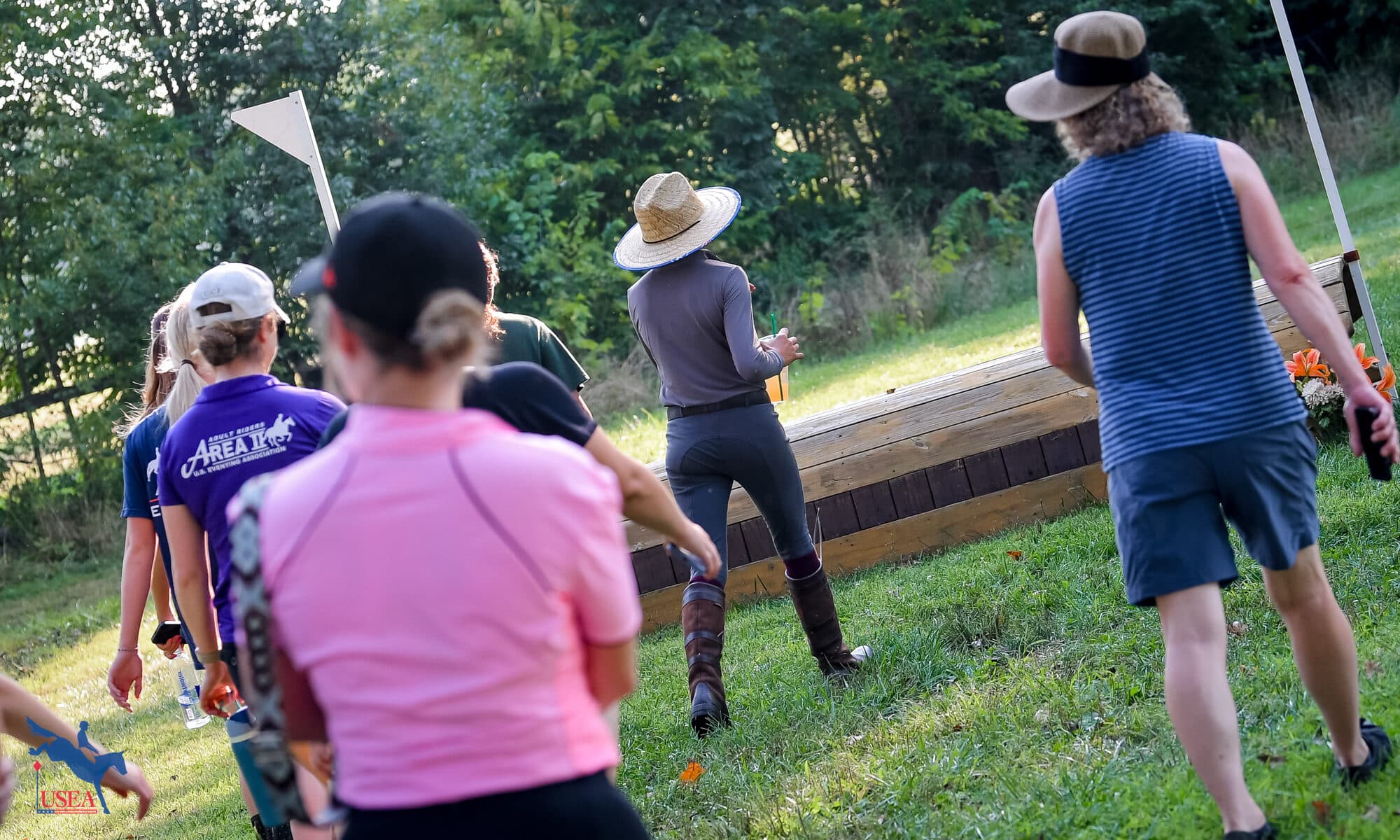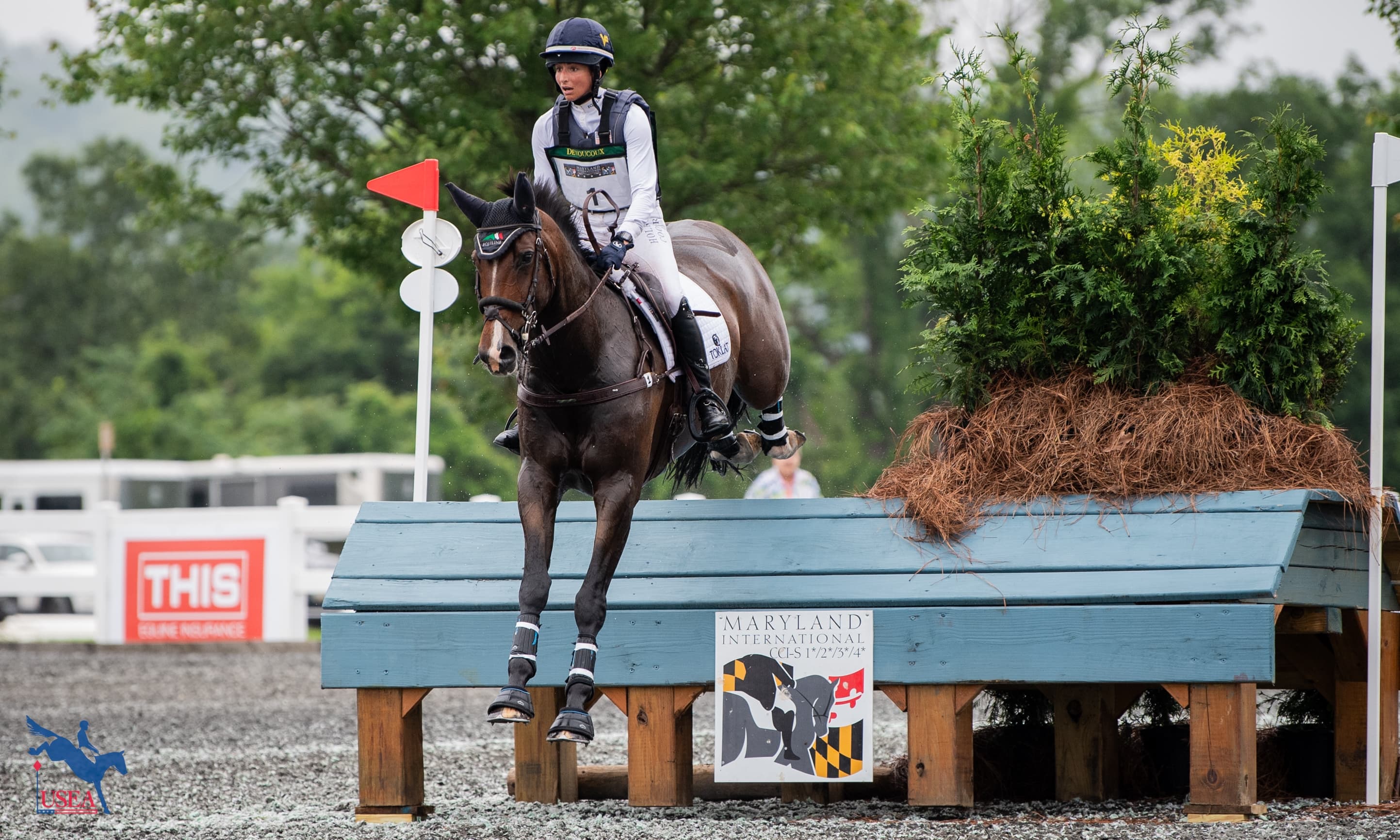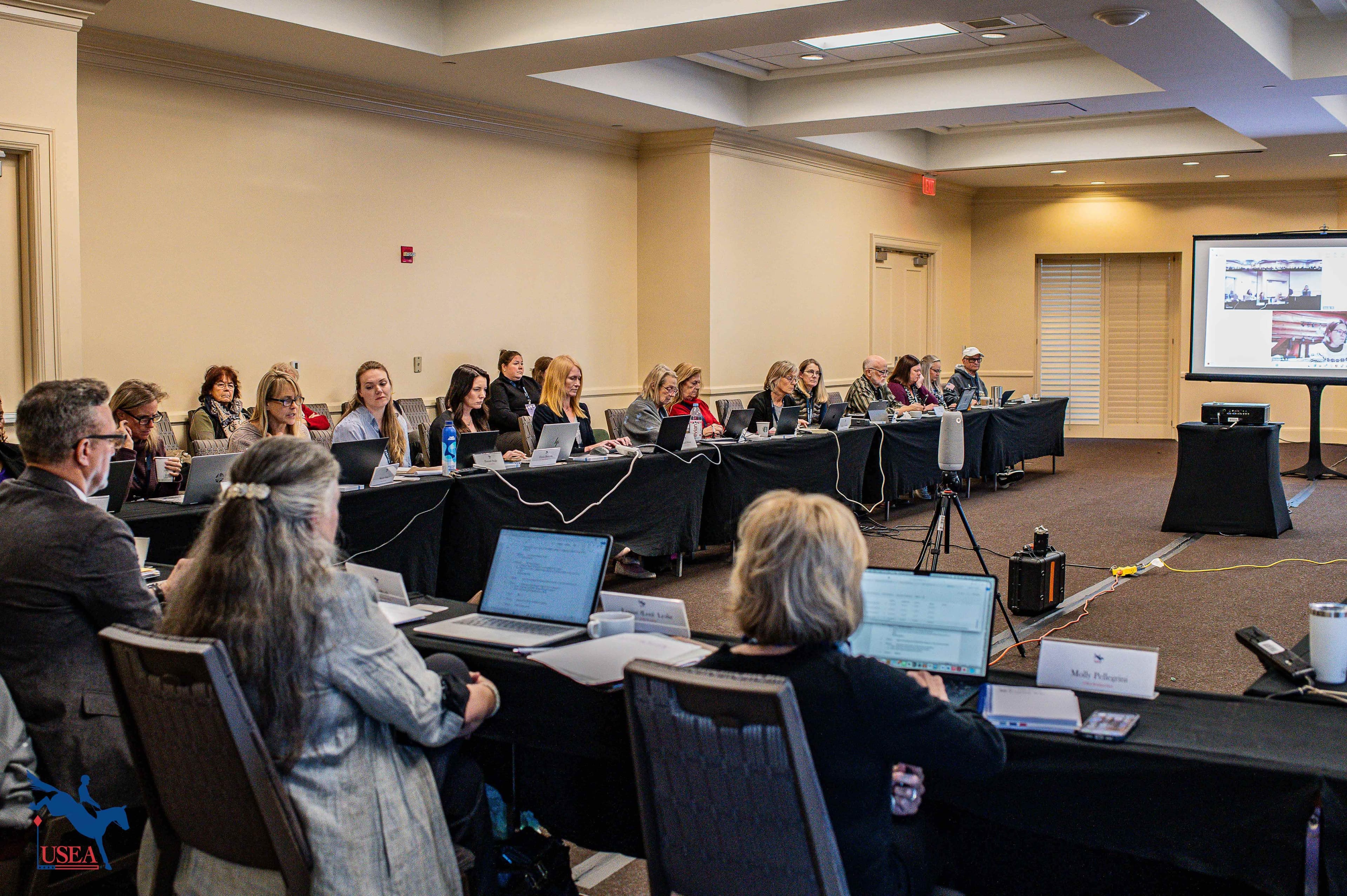8 Tips for Your Next Cross-Country Course Walk from USEA ECP Coach and Course Designer Cathy Wieschhoff

You’ve made it to your horse trial, your horse is settled, your equipment is unloaded and organized, you have checked in with the secretary, and everything is good to go–now what? It’s probably a good time to go on a little walk around the facility and familiarize yourself with your cross-country course.
Walking your track is essential, but there is more that goes into a successful cross-country course walk than just memorizing the order of the jumps. As a former upper-level competitor, a USEA ECP Coach, and course designer, Cathy Wieschhoff brings a unique perspective to the table when it comes to assessing your cross-country course.
“Course designers are designing courses to not only test but then also educate the horse and the rider,” she reflected. “We have our rules and guidelines that we have to follow, and my objective is always to design a course that when the rider finishes, they're going to feel good about themselves, and they're going to feel good about their horse, even if they had a problem out there.”
Want to up your cross-country preparation game? Wieschhoff, who's based in Lexington, Kentucky, at Carriage Station Farm, shares some of her favorite practices that she instills in her students for successful pre-cross-country preparation.
1. Get a first look at your course before walking it with your coach
“This is something I tell all of my riders,” noted Wieschhoff. “They can get their heads around all of the jumps, gather their thoughts, decide what routes they might want to take, or at the upper levels, what options are available, all before we go walk it together. I think this is a great practice for the riders because then they are not just seeing the course for the first time and trying to absorb whatever I am saying and having a bit of information overload.”
2. Be distraction-free
While cell phones are awesome ways to capture photos of each of your fences to help you memorize what jump is next in the order, they can also be a bit of a distraction.
“You have to keep your eyes up when you are walking,” she said. “You need to be looking ahead because you’re going to be going much faster out there when you are riding it than when you are walking it. You can’t have that tree surprise you because you were texting or chatting with your friends and not really looking ahead.”
3. Start by assessing the warmup and start box
“When we course walk, we always start at the start box, and the first thing we look for is our warmup area,” shared Wieschhoff. “Is the start box way away from the warmup area? Because that can impact your warmup plan if you have a 10-minute hack to the start. You need to have a plan for when you are going to jump your last jump and start making your way to the start box based on how far it is from your warmup area.”
Wieschhoff also made it a point to identify if the track circles back and has the finish flags near the start box. The placement of the finish could impact your horse’s ability to concentrate in the start box if there are people cheering and clapping nearby as another rider finishes. Taking in these little details at the start and knowing how your horse might react to them will help prepare you for your run later in the competition.
4. It’s not just memorizing what jump comes next
What happens out on cross-country is often a direct reflection of what happens in between and during the approach to each jump, noted Wieschhoff. Having something to focus on at every point of the course will help you make the most of your ride, but that will only work if you have a plan in place for each fence.
“I don’t want people staring up at the clouds 10 strides away,” she said. “You’ve got to look at the jump. I always have a rule that you are probably three strides away in front or when the horse’s head and neck take away the view of the jump, that is when you pick something to look at. So, if you are walking courses, and it might be something that’s a little more technical, you need to know, ‘I’m going to be looking at that tree,’ or ‘I’m going to be looking ahead to my turn,’ or something that gives you a visual while you are in the air. Something physical that you can turn your attention towards that helps you set up for your next obstacle.”
5. Mentally preparing for any fences that make you nervous
We have all been there–walking along our course and feeling confident when that one jump comes into view, which makes you a little nervous. As a course designer, Wieschhoff knows that for greener riders, these are typically any type of jump that provides spread such as a table or oxer-style fence. Her favorite way to combat her rider’s nerves is by bringing her course designing experience to the table.
“I remind the rider that the fences can only be so big, and they can’t be any bigger than your show jumps,” she shared. “They might look bigger, but they are all within a certain range for the level. I always tell my riders to make sure they have a good canter in the approach and to keep their eye on the front rail–you will always be more successful that way mentally.”
6. Perfect the plan
“Walk your course once before your coach, walk it with your coach, and then after that walk it one more time. Really see each fence and visualize how the whole thing’s going to go so that you are not making silly mistakes out there," she said.
7. Refresh your rulebook knowledge and ask questions
Have questions about something on your course? It might be time to have a quick refresh over a section of the Rulebook. Still confused? Ask questions.
“If you have a question about anything, ask someone,” said Wieschhoff. “Ask one of your fellow competitors or ask the Technical Delegate. They are always really happy to help answer questions; that is their job to help in those situations.”
8. Take note of your finish flags
Wieschhoff finished off her tips with the following story as an important note to always know the location of your finish flags:
“Don’t jump the last fence and throw your arms around your horse’s neck and think how wonderful you are and somehow miss going through the finish flags, because I did that once on the Advanced track at Morven Park,” she said with a chuckle. “Gretchen Butts [a USEA Technical Delegate] walked up to me and said, 'You missed the finish!' You make those mistakes, and you don’t ever make them again, but that is a very hard lesson to learn when you spend all the money, have done all the training, and then have something simple but technical like that take you out!”
Are you new to eventing? Check out www.discovereventing.com for tons of resources to help you get started on your eventing journey.
Do you have more questions about the sport? Don't forget to check out the USEA Eventing Handbook by the Levels, available as a free download for all USEA members through the USEA Member Services Portal. Want to purchase a copy? You can do so here through ShopUSEA.com.
About the USEA Eventing Coaches Program (ECP)
Coaches are essential to the training of riders and horses for safe and educated participation in the sport of eventing. The USEA Eventing Coaches Program (ECP), formerly known as the Instructors’ Certification Program (ICP), was initiated in 2002 to educate all levels of eventing coaches with crucial training principles upon which they can continue to build throughout their teaching careers. ECP offers educational workshops and assessments by which both regular coaches, Level I through Level V, Young Event Horse (YEH) coaches, and Young Event Horse professional horse trainers can become ECP certified. Additional information about ECP’s goals, benefits, workshops, and assessments as well as names and contact information for current ECP certified coaches, YEH coaches, and YEH professional horse trainers are available on the USEA website. Click here to learn more about the USEA Eventing Coaches Program.
The USEA would like to thank Parker Equine Insurance, the United States Pony Clubs, and Strider for their support of the Eventing Coaches Program.














